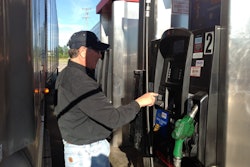
The Trucking Law segment is a new monthly feature on Overdrive, in which we pose commonly asked questions from truckers and owner-operators to legal experts. In this installment, Dr. Alexander E. Underwood addresses how drivers can return to work after a heart attack and why a urine test is needed for a physical.
How soon can I get back to driving after a heart attack?
Unfortunately, the rate of cardiovascular disease and incidence of myocardial infarction, commonly known as a heart attack, is significantly higher among truckers than the national average.
 Dr. Alexander E. Underwood works at KT Health Clinic, a mile from I-44’s Exit 80 near Springfield, Missouri. He can be reached at 417-832-8678 or [email protected].
Dr. Alexander E. Underwood works at KT Health Clinic, a mile from I-44’s Exit 80 near Springfield, Missouri. He can be reached at 417-832-8678 or [email protected].Many drivers who’ve experienced heart attacks have returned to work, but the Federal Motor Carrier Safety Administration has established some time-consuming hurdles to ensure you don’t pose a safety risk.
After a heart attack, you will be hospitalized from one day to several weeks. To return to driving, your cardiologist will need to clear you in writing. You’ll also have to have a satisfactory stress test and a test showing at least 40 percent with your left ventricular ejection fraction (LVEF), a measure of how well your heart is pumping.
Then you still face a mandatory two-month waiting period before you can resume commercial driving. If you do not tolerate your medications or cannot meet the stress testing and LVEF standards, you will be disqualified from driving.

Otherwise, you then can go to a certified medical examiner for your CDL physical. As someone who’s had a heart attack, your certification will now be limited to one year. FMCSA also requires you to pass a stress test at least every two years.
When you visit a CME, you’ll need these documents:
- Hospital discharge
- Clearance from cardiologist
- Stress testing report
- Echocardiogram or nuclear testing showing an LVEF at least 40 percent
- Medication list.
Why do I need a urine test for my physical?
Drivers coming for a U.S. Department of Transportation physical often are surprised at having to provide a urine sample. “I have to do a drug test right now?” is one of the most common responses I get.
I explain this is simple urinalysis, not a drug test. A certified medical examiner tests your urine for glucose, protein and blood. In a healthy patient, none will be present. However, it is not uncommon to see one or more of those, and their presence in the urine does not necessarily indicate a serious underlying illness.
When a problem is detected, discretion about professional driving is left to the examiner. The CME may put your examination on hold until you see a primary doctor or get further testing, or you might get temporary clearance to drive while you see a primary care doctor or get tested.
Glucose in the urine (glycosuria) has various causes, but the usual culprit is diabetes mellitus. When blood levels of glucose remain too high for too long, the kidneys no longer reabsorb this sugar, so it spills into the urine. Other less common kidney diseases and even some medications also can cause glycosuria.
Protein in the urine (proteinuria) also has multiple causes. Damage to the kidneys through hypertension and diabetes are common causes. Others can be toxin exposure, infections and medications.
Blood in the urine (hematuria) might not be visible but can be detected by a urine dipstick. Kidney stones, bladder or kidney infections and certain types of cancer can cause hematuria.
DOT’s required urinalysis might save your life. I have discovered patients with untreated diabetes, cancer, kidney disease and other issues much sooner than if they had waited for symptoms to appear.












